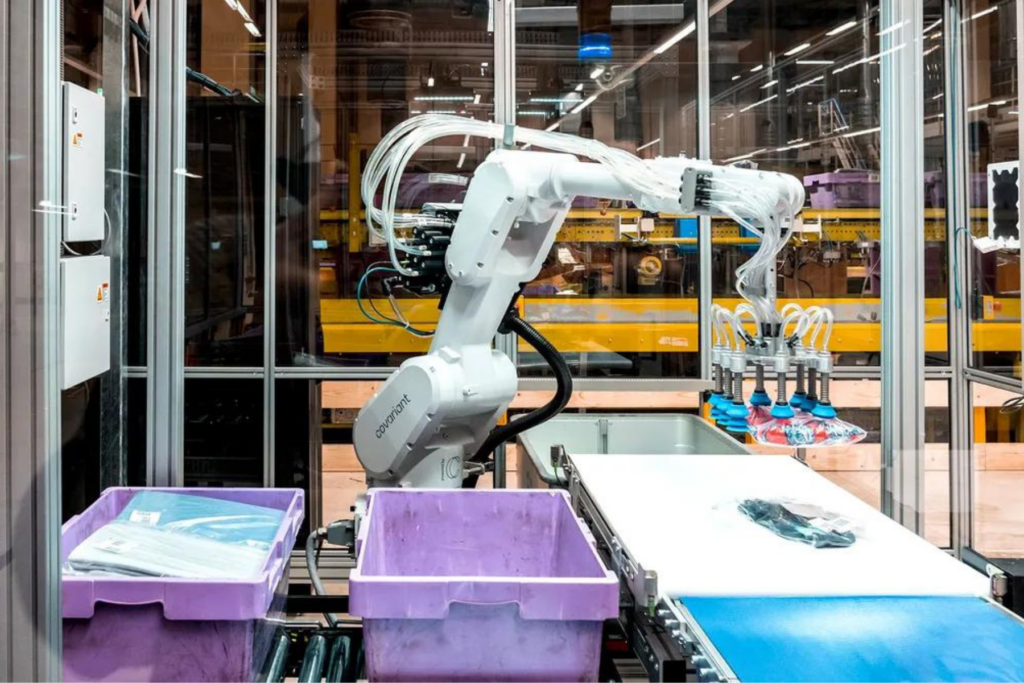UC Berkeley's new artificial intelligence platform - ChatGPT - can help robots think more like humans.

Covariant announced this week the release of the RFM-1 (Robotics Foundation Model 1). Peter Chen, the co-founder and CEO of the UC Berkeley artificial intelligence spinout, tells TechCrunch that the platform, "is basically a big language model (LLM), but for the language of robots."
The RFM-1 is the result, among other things, of a huge amount of data collected from the development of Covariant's Brain AI platform. With customer consent, the startup has created the robotic equivalent of an LLM database.
See also: SAP: Artificial intelligence can increase revenue in the cloud
"The vision of RFM-1 is to power the billions of robots to come," says Chen. "We at Covariant have already deployed many robots in warehouses successfully. But this is not the limit of where we want to go. We really want to power robots in manufacturing, food processing, recycling, agriculture, the service industry and even in people's homes."
Η platform is launched as more and more robotics companies discuss the future of "general purpose" systems. The sudden onslaught of humanoid robotics companies such as Agility, Figure, 1X and Apptronik has played a key role in this discussion. The Form factor is particularly well suited to adaptability (as are the humans it has been modelled on), although the resilience of embedded AI/software systems is an entirely different matter.
For now, the Covariant software is largely deployed in industrial robotic arms that perform a range of familiar warehouse tasks, including tasks such as bin picking. It is not currently deployed on humanoids, although the company promises some level of hardware independence.
See also: The skills shortage in artificial intelligence is getting worse
"We really like the work being done in the general-purpose robot hardware space," says Chen. "The coupling of the intelligence tipping point with the hardware tipping point is where we will see an even bigger explosion of robot applications. But many of these have not yet been fully achieved, especially on the hardware side. It's very difficult to move beyond staged video. How many people have interacted with a humanoid in person? That shows you the degree of maturity."
Covariant does not, however, shy away from human comparisons when it comes to the role RFM-1 plays in the decision-making processes of robots. According to its press materials, the platform, "provides robots with the human ability to think, representing the first time Generative AI has successfully given commercial robots a deeper understanding of language and the physical world."
This is one of those areas where we need to be careful with claims, both in terms of comparisons with abstract - or even philosophical - concepts and their actual effectiveness in the real world over time. "Human-like reasoning ability" is a broad concept that means many different things to many different people. Here the concept is about the ability of the system to process real-world data and determine the best course of action to perform the task at hand.
See also: Positive or negative impact of artificial intelligence in cyberspace?
It is a departure from traditional robotic systems that are programmed to perform a task repeatedly, until the end. Such single-purpose robots have thrived in highly structured environments, starting with car assembly lines. As long as there are minimal changes to the task at hand, a robotic arm can do the job over and over again, unhindered, until it's time to finish and receive the gold pocket watch for its years of faithful service.
However, things can go wrong quickly, even with the smallest deviations. Let's say the item isn't mounted just right on the conveyor belt, or an adjustment has been made to the lighting that affects the vehicle's cameras. These kinds of differences can have a huge impact on the robot's ability to perform. Now imagine trying to get that robot to work with a new part, a new material, or even perform a completely different task. This is even more difficult.
This is where developers traditionally intervene. The robot has to be reprogrammed. Most of the time, someone outside the factory enters the picture. This is a big waste of resources and time. If you want to avoid this, one of two things needs to happen: 1) People working in the field need to learn code or 2) You need a new, more natural method of interacting with the robot.
Read also: Google: former engineer arrested for stealing commercial AI secrets
While it would be great if the former could happen, it seems unlikely that companies would be willing to invest the money and wait the necessary time. The latter is exactly what Covariant is trying to do with the RFM-1. "ChatGPT for robots" is not a perfect analogy, but it's a reasonable shorthand (especially in light of the founders' association with OpenAI).
From the client's point of view, the platform is presented as a text field, like the current iteration of the creative artificial intelligence addressed to the consumer. Enter a text command such as "pick up the apple" by typing or voice, and the system uses the training data (shape, color, size, etc.) to identify the object in front of it that most closely matches the description.
RFM-1 then generates video results - essentially simulations - to determine the best course of action using the previous training. This last part is similar to the way our brains process the possible outcomes of an action before performing it.
Read alongside: Salesforce announces new AI tools for doctors
During a live demonstration, the system reacted to inputs such as "pick up the red object" and even the more semantically complex command "pick up what you put on your feet before you put on your shoes", which made the robot correctly pick up the apple and a pair of socks, respectively.
Many great ideas are thrown away when the promise of the system is discussed. At the very least, Covariant has an impressive pedigree among its founders. Chen studied artificial intelligence at Berkeley under Pieter Abbeel, Covariant's co-founder and chief scientist. Abbeel also became an early employee of OpenAI in 2016, a month after Chen joined ChatGPT. Covariant was founded the following year.
Chen says the company expects the new RFM-1 platform to work with the "majority" of the hardware on which Covariant's software has already been deployed.
Source of information: techcrunch.com

